#the story his actions set into motion is interesting. the actual character is like. just stylistically interesting execution of a trope that
Text
I’m sorry I have to speak my truth lmao it’s a little bit hilarious that kingpin is stylistically offered such flourish and creativity, when writing wise he’s so fucking generic.
#another day ANOTHER POST OF ME BEING ANNOYED FUCKINGGGGG KINGPIN IS GIVEN ROOM TO BE A THREE DIMENSIONAL CHARACTER AND AARON GETS SUBTEXT#AND THE CHOICE BETWEEN NEBULOUS VILLAINY AND FAMILY HE LOVES#LIKE IM SORRY BUT EVEN W HALF THE EXPLORATION AARON IS MORE THAN TWICE AS INTERESTING AND YET WE HAVE LIKE. THREE SADMAN KINGPIN MOMENTS#IM SORRY SPIDERVERSE THIS IS THE ONE AREA I THINK WASNT THAT. INTERESTING. GIVEN HOW FRESH AND REVITALISED EVERYTHING ELSE FEELS#LIKE. COULD WE GET JUST A SMIDGE MORE INSIGHT INTO WHAT LED AARON HERE? SO WE KNOW WHAT HE GIVES UP FOR MILES?#LIKE IT WAS ALWAYS GOING TO BE MILES I *LOVE* THAT ITS MILES BUT ITS LIKE#DEVOID OF TENSION BECAUSE WE HAVE ONLY DEVELOPED THE DIMENSION OF AARON IN REGARDS TO HIS FAMILY#LIKE DID HE GET IN TOO DEEP WAS THIS A SECURITY THING HOW LONG HAS THIS BEEN HAPPENING WHERE THE PROWLER DOESNT BLINK AT BEING ASKED TO KILL#A CHILD#AGH#tunes talks critical#tunes talks spiderverse#I don’t even dislike kingpin lmao (I don’t rlly think anything of him beyond the fact I’m glad miles kicks his ass) I just think it’s almost#a bit of a waste that stylistically he’s interesting and fun to look at and watch be animated but writing wise he’s so generic#he provides nothing new to the trope motivation he’s embodying#the story his actions set into motion is interesting. the actual character is like. just stylistically interesting execution of a trope that#is just not that emotionally compelling for me. esp when nothing really NEW is being done w it
7 notes
·
View notes
Text
So I've seen a few too many people on twitter talking about The Kiss Scene from the new Scott Pilgrim anime. People saying it's fetishistic and indulgent, people calling it male gazey, etc. And while the kiss itself is certainly a bit exaggerated, I felt like writing a bit about why I disagree, and why context is important, like it always is. But it basically turned into an extended analysis on the metatextual treatment of Roxie Richter. So bear with me. It's a long post.
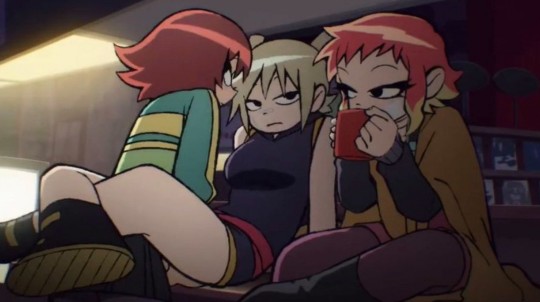
What really matters about this scene is not the kiss itself, but what precedes it. Not even just the fight scene just before it, but what precedes the whole anime series, really. And that's the Scott Pilgrim comic book, and the live action movie. Because in both, Roxie is a punchline.
She's a joke. Her character starts and ends with "one of the exes is actually a girl, I bet you didn't expect that." Jokes are made about Ramona's latent bisexuality, the movie especially treating it as funny and absurd, and her validity as a romantic interest is entirely written off by Ramona as being "just a phase." There's a fight scene, she's defeated by a man giving her an orgasm which implicitly calls her sexuality into question (come on), and the movie just moves on. It sucks. It really, really sucks.
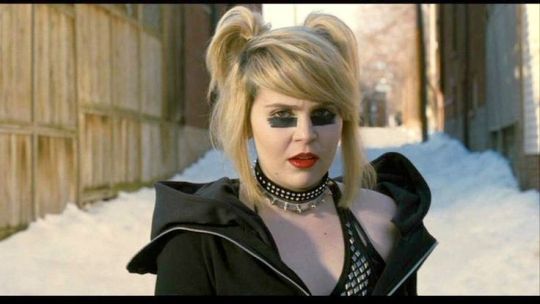
The comic fares a little better. It never veers into outright homophobia like the movie does, and while the line about Ramona having gone through a phase remains, Roxie actually gets one over on Scott when Ramona briefly gets back with Roxie. But Roxie is still only barely a character. Like all the other evil exes, she's just a stepping stone towards the male protagonist's development. She barely even gets any screentime before she's defeated by Scott's "power of love." But Roxie stands out, since she's the only villain who is queer, or at least had been confirmed queer at that point (hi Todd). In a series that champions multiple gay men in the supporting cast, the single undeniable lesbian in the story is a villain. She's labeled as evil, made fun of, pushed aside in favor of the men, and then discarded. Her screentime was never about her, or her feelings for Ramona. It was about the straight, male protagonist needing to overcome her. And that was Roxie Richter. An unfortunate victim of the 2010s.
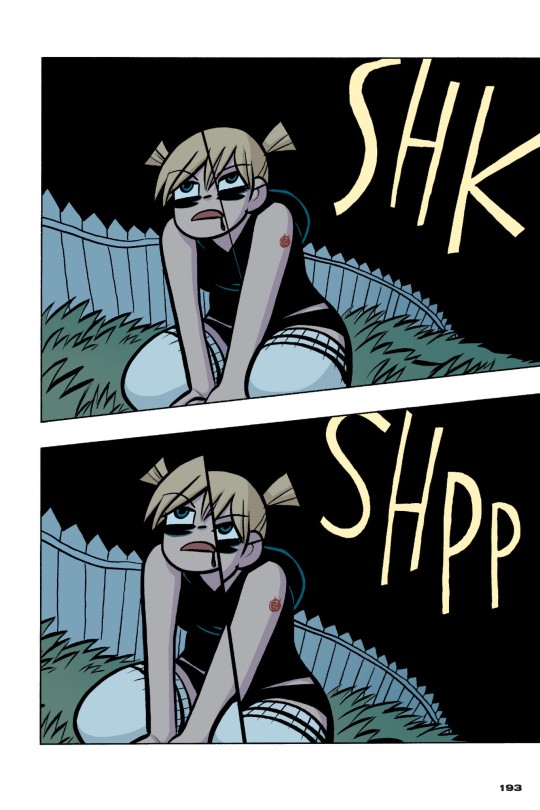
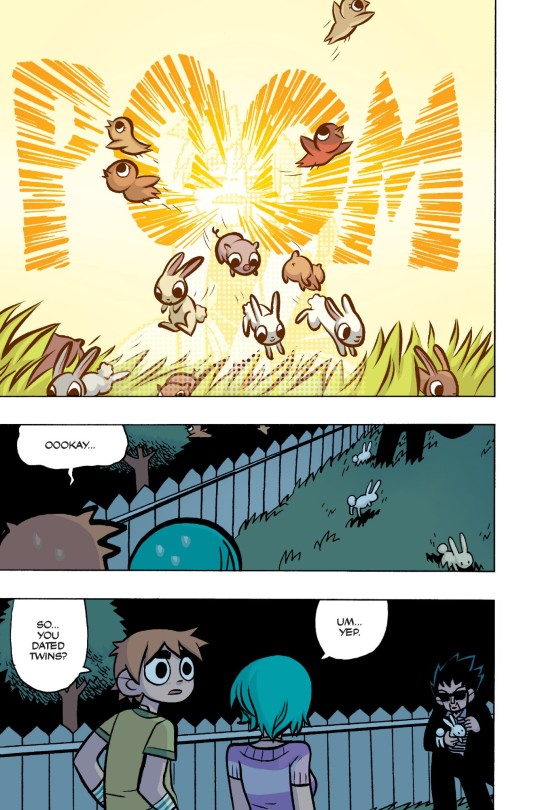
Fast forward to current year, and the new anime series is announced. Everybody sits down to watch the new series expecting another retelling of the same story, and.... hang on, that straight male protagonist I mentioned just died in the first episode. And now it's humanizing the villains from the original story. And there's Roxie, introduced alongside the other evil exes in the second episode, and she's being played entirely straight, without a punchline in sight. No jokes are made about her gender, no questions are made of her validity as one of Ramona's romantic interests. The narrative considers her important. In one episode, she already gets more respect than she did in either of the previous iterations of Scott Pilgrim. And this isn't even her focus episode yet... which happens to be the very next one.
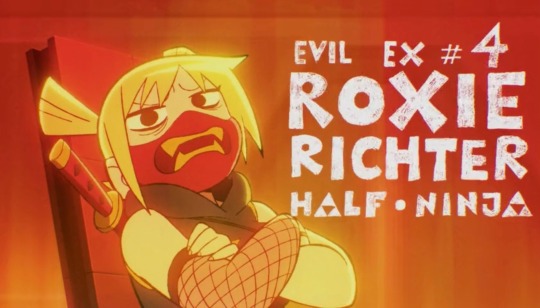
The anime series goes to great lengths to flesh out the original story's villains and to have Ramona reconcile with them. And I don't think it's a coincidence that Roxie gets to go first. While Matthew Patel gets his development in episode 2, Roxie is the first to directly confront Ramona, now our main protagonist. This is notable too because it's the only time the exes are encountered out of order. Roxie is supposed to be number 4, but she's first in line, and later on you realize that she's the only one who's out of sequence. She's the one who sets the precedent for the villains being redeemed. She's the most important character for Ramona to reconcile with.
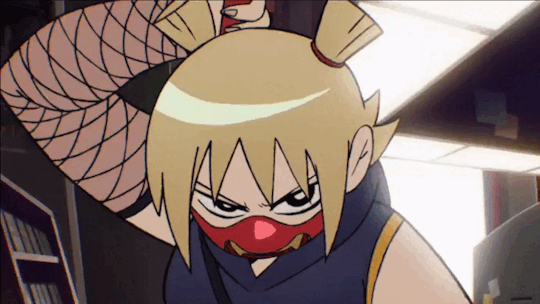
What follows is probably the most extensive, elaborate 1 on 1 fight scene in the whole show. Roxie fights like a wounded animal, her motions are desperate and pained. Ramona can only barely fight back against her onslaught. Different set-pieces fly by at breakneck speed as Roxie relentlessly lays her feelings at Ramona's feet through her attacks and her distraught shouts. And unlike the comic or the movie, Ramona acknowledges them, and sincerely apologizes. And the two end up just laying there, exhausted, reminiscing about when they were together.
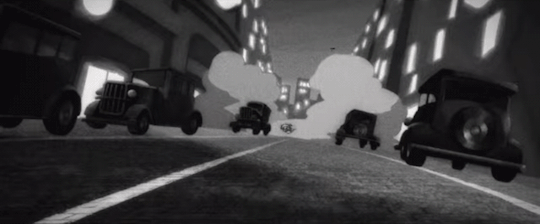


Only after this, after all of this, does the kiss scene happen. Roxie has been vindicated, she has reconciled with the person who hurt her, the narrative has deemed that her anger is justified and has redeemed her character. And she gets her victory lap by making the nearest other hot girl question her heterosexuality, sharing a sloppy kiss with her as the music triumphantly crescendos.
It's... a little self-congratulatory, honestly. But it's good. It's redemption for a character who had been mistreated for over a decade. And she punctuates the moment by being very, very gay where everyone can see it, no men anywhere in sight. Because this is her moment. And then she leaves the plot, on her own accord this time, while humming the hampster dance. What a legend. How could anything be wrong with this.

#scott pilgrim#spto#scott pilgrim takes off#roxie richter#roxanne richter#scott pilgrim spoilers#spto spoilers
19K notes
·
View notes
Text
Young Royals and the three act structure, Part one
Seems like there was some potential interest in a full three-act story structure analysis, so I’m taking this opportunity to indulge myself by going full nerd. I’m going to attempt to make the argument that limiting the show to three seasons is actually perfect for Young Royals, by highlighting the pattern the story follows.
A few things to keep in mind before we start.
This analysis is not about the characters deep inner emotional lives. We are not here to pass judgment on their actions. We are simply identifying the beats of the story in a neutral and objective manner, for the purpose of analysing the structure of the story.
As you will notice, the points I have identified are all from Wilhelm’s perspective. That’s because he’s the point-of-view character, the main conflict is shaped by him and his emotional state. He’s the protagonist. Each subplot however, will follow the same pattern and has its own purpose, but I’ll get more into that another time.
I’ll be referring a fair bit to Lindsey Ellis’s video essay on the subject, because I like how she describes the structure pattern in sequences. So I’m gonna borrow some of her language. Also, note that the examples she uses to describe the tree-act structure are all feature films. Since Young Royals is a series, it’s gonna divert slightly from her description. But that’s what is so great about this structure, it’s flexible. It’s not meant to be set rules, but rather guidelines to help keep your story relevant and engaging all the way through. If you find this stuff interesting, I’d highly recommend watching her videos!
The three act structure is absolutely not the only way to tell a story. There’s many different formats that works just as well! It’s really about finding what structure works best to tell your story. The three acts however is the most common format you’ll find in more commercially viable works, such as Disney films for example.
And finally, I’m not a writer, but an animator, and I have studied film theory/structure. I’ll do my best to motivate the plot points I’ve identified, but if you’re a proper story expert and disagree with me, I’m happy to discuss!
Okay, let’s get to it.
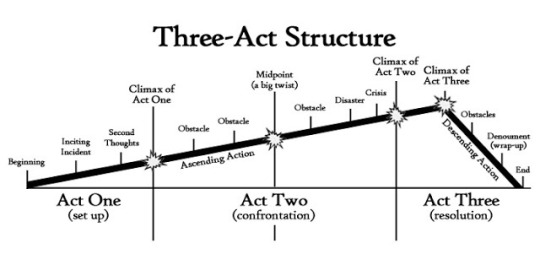
A three-act structure is constructed of just that, three acts, and roughly looks like this. Essentially, a beginning, a middle, and an end. Or the set up, the confrontation, and the resolution. These acts may vary in length, act two usually being the longest and act three usually being the shortest. But what truly defines them is the tension of each act, meaning what drives the conflict forward at that point. A story will have a main conflict yes, but that conflict will take on many forms depending on where we are in the story. Lindsey Ellis describes each act as consisting of multiple sequences, and defines each sequence by its individual tension as well. Though all points of tension should always stay related to the main conflict! So the main points we’re looking to identify in the story are the main act tensions and the main sequence tensions.
Let’s go through season one of Young Royals and talk about each story beat.
Act 1
Act tension - Wille has to attend Hillerska.
Sequence 1
We start with the Set up/Hook. The purpose here is to establish the world and the protagonist along with their internal conflict, such as their flaws and/or desire that makes them feel incomplete - The way Wilhelm’s character is introduced informs us that he is royal, but struggling with his role, because royals have set rules to follow.
“Why can’t I decide how the hell I want to live? I want to live a normal life!”
The thing that sets the story in motion is the point of attack. Something happens that is outside of the protagonist's control/knowledge - That would be the royal court deciding to send Wille to Hillerska without his permission. This gives the protagonist something to react to.
Sequence tension is established - Wille does not want to go to Hillerska. The rest of episode one reinforces Wille’s discomfort at the school.
Next, we get to the inciting incident. An event that disrupts the status quo, and our protagonist has to get involved - The initiation party, particularly when Wille and Simon almost kiss at the end. This leads him to acknowledge his attraction toward Simon and become more proactive in his pursuit of the boy.
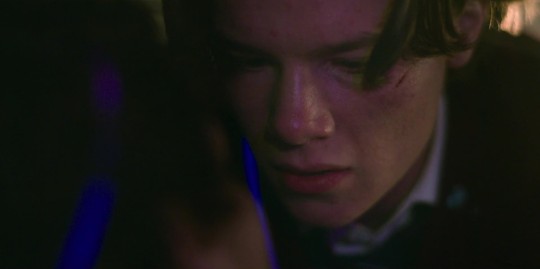
The sequence tension is resolved. Notice how in episode two, Hillerska is no longer the main focus for Wille, but Simon is. The seeds for what will become the central conflict have now been planted. The conflict is usually driven by character motivation. This is where we can consider the protagonist's Want vs Need. The want drives the main tension - Wille wants to be with Simon. But we’ll find want he needs later on in the story.
Sequence 2
The purpose here is to build up the creation of the main tension of the story. The main antagonist can also be established here - August keeps getting on Wille’s nerves. Especially when he’s trying to hang out with Simon.
That’s our sequence tension - Wille is working to befriend Simon, but August keeps getting in the way.
The end of the sequence sees the first major plot point, the Lock-in. Where our protagonist makes a decision that changes everything. Usually, something they can’t come back from - In Young Royals that would be the first kiss. Wille and Simon’s relationship has fundamentally changed. The main tension is now established.

Act 2
Act tension - Can Wille be with Simon, despite him being a prince?
Sequence 3
At the start of this sequence, the protagonist has most likely achieved some kind of milestone or learned something - He’s definitely like that.
To keep the story interesting, writers will add so-called pinch points in between the bigger plot points. These usually act as reminders of the antagonist or the pressure our protagonist may feel - Wille feels he needs to break it off with Simon because a prince is not supposed to be gay. As we established in the set up, royals have rules.
Sequence tension - Can Wille deny his feelings for Simon? Queer pining ensues.
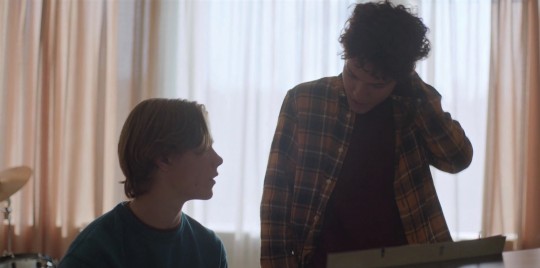
Sequence 4
The purpose of this sequence is to build up towards the midpoint. We see the protagonist making attempts to achieve their goal - The want never changed, Wille still wants to be with Simon, despite the pressure. Wille invites him to spend the weekend with him.
Sequence tension - Wille is trying to prioritise his new relationship with Simon, but August is still being annoying.
Then the midpoint hits. A major disruption, either from a character action or a force of nature. Can be positive or negative, just something that changes the aim of the quest without resolving the main tension - This time it’s literally halfway through the season. End of episode three, Erik dies and Wille becomes the crown prince. Everything has changed.
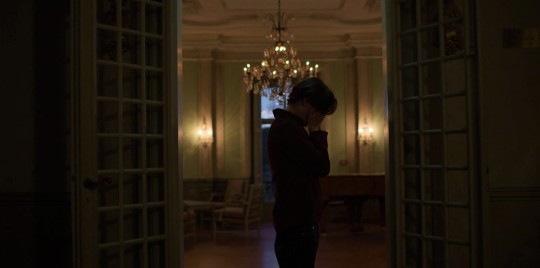
Sequence 5
Everybody has to adjust to the new world order after the midpoint disruption. We’ve reached another pinch point - Again we are reminded that royals have rules, and Wille makes another attempt to follow those rules. By embracing his new role, he breaks up with Simon once again, then sort of pursues Felice and joins the society.
Sequence tension - Wille adjusting to his new title while mourning his brother.
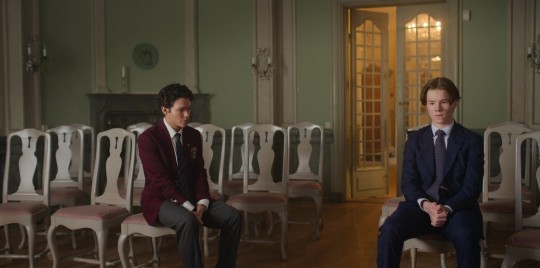
It’s common for subplots to advance around this time - Like Simon giving August the drugs to sell.
Sequence 6
Another plot point, where our protagonist may stop and reflect. Maybe have a heart-to-heart with another character, and perhaps make a decision - This is where we see the football field scene and the end of episode four. Wille reaches out to Simon for help, reconnecting with him. This leads them to pursue a relationship once again. They are put in a false sense of security. They are finally together, thinking all is good. BUT, we in the audience know that August has the video of them and the writers keep reminding us of him and the threat he poses. Even if Wille and Simon don't know it yet.
Sequence tension - Can this happiness last?
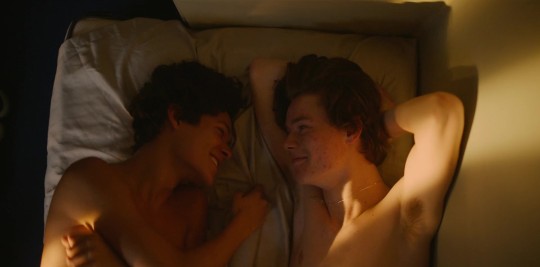
Sequence 7
(Here’s where the story leaves the classic structure for a bit, and adds an extra sequence for some more drama, as filler. In theory, they could have skipped this sequence and gone straight to the video being released. This part is mainly here to give motivation for August’s character, making his actions clearer)
So we are essentially given another pinch point, a reminder of antagonist or pressure - August tries to break them apart by telling Wille about the drugs, which leads to the music room fight.
Sequence tension - August is becoming more hostile.
Wille saving Simon from being framed for the drugs is more related to August’s money subplot. And the Lucia hug scene is mainly there for character building purposes. I’ll talk more about that stuff in part two.
The plot has advanced to the culmination of the main tension. The crisis that serves as build-up to act three - August releases the video. At the end of act two, the protagonist faces their biggest challenge yet. They’ve hit their lowest point - The aftermath of the video's release and Wille is totally lost.
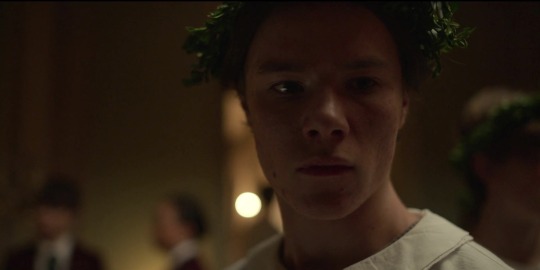
Act 3
Act tension - Can they save their relationship after the video?
Sequence 8
Begins with the protagonist making a big decision that creates the new act tension. The tension in act three will be different, but still related to the main conflict - Wille and Simon talk in the locker room, where Wille says he won’t do the statement.
Sequence tension - Can Wille avoid making the statement?
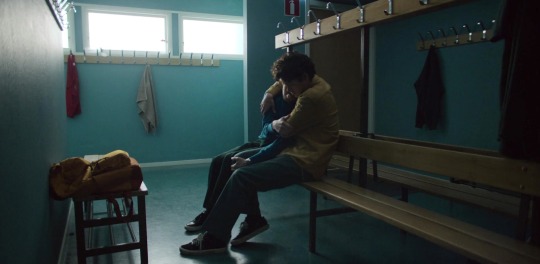
We’ve reached our last major plot point, located at the end of the sequence. Sometimes known as the twist in the third act - And what a twist, Wille does the statement anyway. This narrows down the tension further, to focus on a more character-driven intimate place for the next sequence.
Sequence 9
Sequence tension - Can they be together despite the statement?
Climax, the last big fight - Simon tells Wille off for being selfish and breaks up. Wille also finds out that both August and his mother betrayed him. The protagonist’s need has emerged from this journey and is now clear to us - Wille needs to decide who he wants to be. The want and the need should be different from each other, but still connected. Wille wants Simon, but in order for that to happen, Wille needs to break out of this cycle of self-preservation and stand up for himself against the royal court.
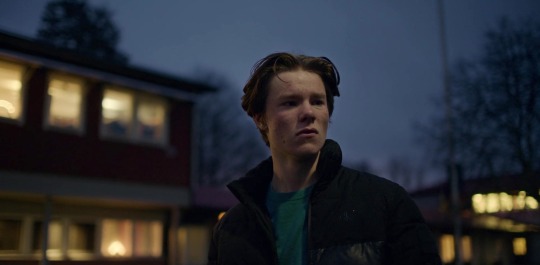
The climax will most likely lead to some kind of character growth - Wille is now pissed because he’s lost everything and realizes how corrupt the royal court is. As Lisa so beautifully put it, “A flame is ignited in him”. Hugging Simon in public is a display of his character growth.
And finally, Resolution. The point where the story is usually wrapped up neatly, but if left ignored, you get a cliffhanger - Which is exactly what happens in this season. Nothing is properly resolved at this point. Resulting in an open ending/cliffhanger.
Oof, that was a lot. How are we all doing? So these are the main beats of the plot. Makes sense? Let me know if you need any further clarification 😅 I was gonna get into how the rest of the show fits this format as well, but that’ll have to be in a separate post. Here’s part two!
#young royals#prince wilhelm#young royals analysis#young royals season 1#film theory#story structure#story analysis#young royals and the three act structure#wilmon#simon eriksson#august horn#my meta#my analysis
239 notes
·
View notes
Note
I recently did a few polls on my yt channel community page - which (ok not many people votes so the data may be irrelevant) seem to have kinda shocking results - it showed that the Baba Yaga arc in the manga, contrary to my belief, was not the most popular part of the manga - and to the contrary, maybe the least liked part.
So that made me curious, is the only arc I as a famous dick that shits on the manga too much like actually not that good?
What is your oppinion on the Baba Yaga arc,especially compared to the following manga arcs?
It's pretty strong to be honest. Vwry strong, with good villains, good character moments, and set in motion by manga Maka's greatest moment of weakness, when she was too much of a coward to either confront and talk to Crona about learning about medusa and then go from there, or go to the higher ups about it, which would have had crona suffer the consequences.
Instead she hides it all away, like a coward, unable to decide on a course of action and what it could lead to.
And she is punished for it by being separated From Crona, which thematically means that her moment of weakness set into motion the entire rest of the series.
And unlike a lot of shonen arcs, the story does NOT end on a happy note, at least not for Maka, as while arachne and her faction is defeated, medusa used her like a puppet, and didn't hive her any hints of where Crona was, meaning that for Maka it was all for nothing.
Amd thats just our main character's journey. There is plenty more.
No the problem with the arc, and the reason why i think a lot of people might sour on it, is that taken as it's own, the manga version of the arc is great... But the anime version has the benefit of leading directly into the final part of the story, and so while it doesnt aim as high from a character standpoint regarding the whole archne/medusa plot, it works just fine as the events that sets the final battle into motion.
By contrast the manga version is soured by everything that comes after.
Noah is the single most forgettable and BORING villain in all of Soul Eater, with his faction being little better, and so his defeat of Musquito and kidnapping Kid doesnt feel particularily interesting when you know where it leads as it's extremely dissapointing.
The whole Liz and Patty being on their own, starts off interesting as post timeskip Patty seems to be completely losing it and backtracking to who she used to be, but it doesnt go anywhere.
Black Star is pretty much the only one of the characters who gets a good outcome, as while the following arc is rather shit, his development from Mizune's death and eventual rematch with kid is the best part of that arc.
The single worst off though, Is Maka.

The baba yaga arc should for Maka, have been what the whitebeard war saga was for luffy. A great story, where all of her efforts are ultimately all for absolutely nothing.
The point of ultimate failure who's effects would define her decisions from then on.
But that's not what happens, because while Maka has a lot of nice moments after this, the climax of the arc is where Maka's journey as a coherent journey where you can trace her development in a logical manner ends.
The timeskip afterwards, rather than have her being utterly depressed or angry at the world, at Medusa and most of all at herself, instead has her in a great mood, and playing around with wanting to look cute, which isnt out of character per say(as maka is defintily a tomboy with a girly streak) but is utterly BAFFLING to have her be like this at this point when she should have been at her lowest.
And following that, her next development is her fears of holding Soul back after he became a death scythe? Like... That could have worked if the development post timeskip was about her having come developed a svere self hatred for failing Crona with her moment of weakness, but that really is not the way it's portrayed at all.
Her interaction with Crona post this is something i have covered before, as while there is plenty of great stuff there, the whole package is utterly ruined by the terrible ending the manga ultimately got.
Overall, the baba yaga arc is good on its own, but it very much marks the point where the manga had reached a clear and coherent direction(after some early less than perfect chapters) to the point where afterwards it would begin to spin it's wheels.
11 notes
·
View notes
Text
Parting thoughts:
I took my time (3 Days) to get through all of Scargiver, but it wasn’t unpleasant to keep returning to the story— I just had to take more time to get through it. This tells me it would’ve been more successful as a show.
In a lot of ways, this felt less like a an adult-oriented Star Wars and more like a live-action remake of Studio Gonzo’s Samurai 7 anime from 2004. The difference between these films and Samurai 7 however, is that the anime takes its time to establish a dynamic for a party so large. There’s literally seven people we need to get to know. We’re along for the ride to watch the characters interacting on a journey. 
Here, however, The Journey is cut for time, and the script seems to focus only on the high-fat, salty bits of a story—slow motion fight scenes, huge set pieces, random trauma-dumping inserted for exposition.
In many ensemble cast shows/movies that work, the characters take time with one another. There are periods of rest and bonding. That’s why it feels comforting to watch them—we feel like we’re part of their ensemble, and growing with them.
Shows like Avatar, The Bear, The Expanse, movies like The Goonies—all also leave room in the script for rest and character time where the stakes are low and they’re learning about each other. In Rebel Moon, that character development feels shoehorned and paint-by-numbers: “Okay, adopted daughter who is betrayed, check. Samurai woman from a cyberpunk planet who fights for revenge, check. Hot French Farmer who’s just here for a good time, check.”
There’s no short cut for making a likable group of characters, unfortunately. We have to spend actual on-screen time with them and decide if we like them. That’s why we end up worrying more about the Farmers in Rebel Moon than we do the actual main cast—because we spend more time with them overall.
I think if Zack Snyder balanced out his Hot Wheels Cool Factor a bit more to spend more time doting on characters, his stories would feel so much more emotionally grounded. Explosions are cool, campy fun is ALWAYS appreciated, and it’s ok if you’re just making a lore heavy movie that’s about super strong pretty people, but even in (great) comic books & anime—it’s not all about the aesthetics—it’s about pushing storytelling in a highly visual medium without losing your audience.
All that being said, the fight scenes all over this movie were stunning, and a joy to watch.
Interested to see where this story will go from here, and how it’s received over time—as I see this series becoming a campy cult hit years from now.
5 notes
·
View notes
Note
The last anon's ask made me think of something. In what ways do you think Howard changed because of Chuck's death and the aftermath of that? I'm doing my rewatch of BCS and a main question I'm trying to answer for myself is how Howard changes, and what ways he doesn't change as the story plays its course. Watching the first three seasons, I think the perception of him being smug or arrogant is kinda exaggerated, for instance. The flipside of that is that he does seem to be generally a more considerate, or at least trying to be considerate, person by the latter half of the series.
I think the change in howard was set in motion actually before chuck's death, when he really started to come to terms with the fact that chuck was mentally ill. I'm inclined to believe that when he says "I, for one, believe he's gonna lick this thing" in 101, he's being genuine—he either believed that chuck's EHS was real and simply misunderstood/under-researched, or he believed that it was like the 1800s and chuck could just be diagnosed with A Nervous Condition and be sent to a seaside cottage for six months and come back good as new. In either case, I don't think it was just him not wanting bad PR, i think he genuinely believed in chuck's ability to recover from whatever this was. So rather than recalibrating his loyalty to chuck, and to chuck's good judgment, according to the seriousness of chuck's illness, he continued for a long time to defer to chuck the same way he always had ("Hail the conquering hero!").
And I think what was slowly revealed to howard over the course of seasons 1-3 was that that level of loyalty to anyone had the potential to be destructive. Chuck's illness did affect his judgment and did create problems for them, but even beyond that, even before that, howard shouldn't have deferred to him (or perhaps even to George before him!) as much as he did.
BUT then that lesson is IMMEDIATELY challenged by chuck's suicide, which he correctly perceives as such. He immediately begins to doubt his own judgment and blame/berate himself ("I should've just let it go. I mean, God knows he's done enough for me"). For a while in season 4 he thinks, I should have deferred to chuck more. Not only is HHM falling apart now that he's gone, but my one effort to stand up for myself against chuck ended in the worst calamity imaginable. The one time I deferred to my own judgment, I killed someone.
And honestly, even though it’s kinda boring to say it (fitting for a boring guy!), what turns howard around on that point really seems to just be… going to therapy. By gettin in his car and drivin out there to talk about his airport dreams twice a week, he eventually comes to terms with chuck’s death and processes it. I found it interesting that the storyboard for 507 had howard saying he “killed chuck,” but the final script has him saying he “sided with chuck too often.” I think that speaks to Howard’s realization that everyone is responsible for their own actions. Howard wasn’t forced to go along with chuck, he chose to side with him; and, furthermore, the only person who killed chuck was chuck.
I don’t think Howard’s story is the story of someone who went from mean to nice, or arrogant to humble. Like jimmy with his elderly clients, he displays kindness that borders on condescension. Like kim, he’s capable of delivering a major tongue-lashing, right or wrong. Like kim, he stood by his partner’s bad decisions long enough to make some bad decisions of his own, then tried to make amends for them, though the damage had long been done. Like any of the other main characters on the show, he’s been complex from the beginning and stayed complex till the end.
But if there was a major change in him, I think it’s the one I described above. He had to learn, not how to make his own decisions, but that he had been making his own decisions all along.
37 notes
·
View notes
Text
The Horror of falling in love-Heart Devourer Analysis
Spoiler Warning: I do indeed talk about everything that happens in the fic up to and including the most recent chapter, so please don't click if you haven't read the fic yourself. Heart Devourer has very heavy themes of Violence, Cannabilism, Gore, NSFW, heavy blood and much more, so please be mindful and check the tags before you read the story or read the review.
Check the original story out on AO3 by KinoWrites. It's a really good read!
This month I started reading a fic called Heart Devourer by Kino Writes on AO3 and it's my favorite genshin fic I've read this entire year. It's SUCH a good horror story that has a unique and interesting premise, while still tackling both new and old tropes flawlessly. I enjoyed the themes of the story as well as the characterization of the character's chosen for this fic.
So what is Heart Devourer even about? Well here's a quick synopsis:
"Shikanoin Heizou is the lead detective on the case of a string of cannibalistic murders committed by a terrifying killer known as the Shinzo Kuishinbo (Heart Devourer). He has to balance the endless hours he commits to the case, a crush on his roommate Kazuha, and confusing feelings for a new friend named Kuzo. Meanwhile, Kazuha is falling rapidly in love with Kuzo, despite sensing that Kuzo is hiding a dark secret. He struggles with his feelings for this mysterious man, while still harboring feelings for his roommate Heizou. All the while, Kuzo is pulling all the strings, playing them like a pair of puppets in a tragic romance."
-Heart Devourer's AO3 summary
One aspect of this fic that I really enjoyed was how it took what is usually a really cute, and fluffy trope (Falling in love at first sight) and twisted it to be something downright horrifying. In books, "love at first sight" is usually played as the most romantic trope you could do, the idea that all two people needed to come together was to set eyes on one another in the first place, it's no wonder it's used so often in stories.
But in Heart Devourer, the horror doesn't just come from the way Kuzo is able to make people fall for him with a single touch or glance, it's his intentions and mind that contrast with his actions that make all of those scenes absolutely nerve wracking. Every scene with Kuzo in it where he makes someone fall for him is played not as a romantic encounter, but like a scene in a slasher film when they come across the killer for the first time. Even in the first chapter, it just feels like a classic horror film rather than the beginning of some cheesy love story:

Another thing that makes it scary is just how fast the falling in love happens for his victims. There's no slow motion view, or rose petals, and there's certainly not time to even process what's happening to the other person until it's too late. The way Kuzo's victims are described when he does this to them sounds as if they've been put under a spell in an instant, or gone crazed.

This was one of my favorite scenes in the fic, mainly because it's the one that best shows Kuzo's ability in action. Before this scene, things were peaceful and even really cute, until the horror of what Kuzo just did sinks in. The whole fic is full of this kind of tension as well, especially later on when Kuzo starts to kill and eat more people near Kazuha and Heizou's home.
Watching two people slowly fall prey to a serial killer as he hides in plain sight is such a surreal thing to read about, and every scene with Kuzo and his two loving boyfriends is super unnerving as the things he says and the things he's thinking never match at all.
His point of view is so different from Kazuha's and Heizou's that I want to break down just how narratively perfect each of their perspectives are.
Kuzo's Perspective is like reading about a monster on a sick hunt every night, he's a sad and sympathetic villain who still does absolutely terrible things to other people. His inability to actually love someone or something in a healthy way just drives him forward to commit more atrocities, and the worst part is that the people he hurts don't even realize they're being literally eaten until they're dead. The pain of having their body bitten at over time and the love they have for Kuzo always contradicts one another and shocks them out of whatever spell he's put on them.

And this is such an interesting way of doing a "love hypnosis/spell" kind of mind power, because instead of making the "love" they feel overpowering to the point where they are practically invincible, all it does is blind people to who Kuzo really is as a person. He has to not only have a constant stranglehold on someone's mind, but also their heart so they don't completely abandon him the moment he actually hurts them.
Kazuha's Perspective shifts from an adorable little meet cute between strangers, to a horror story where he's not sure what but something is wrong with his significant other, to a thriller where he has to somehow defeat a person he can't help but care about. Kazuha is a really likable hero in this story, and one that has a layer of irony to it because he like Kuzo also has a strange ability that he uses to help him understand others better. He's got a vague "connection with the wind that other's don't understand" and he's also deeply empathetic and understanding of other people. Kazuha is Kuzo's foil in this story, and he represents the kind of person Kuzo could've been if not for the tragedy that befell him when he was young. Particularly the scene where Kazuha finally realizes who Kuzo really is and what he's been doing, shows them both conversing internally but completely having separate reactions to the truth.

And in the end when Kazuha fails to beat Kuzo and practically loses everything including his own memories and heart, it's gut wrenching. You spend all of this time with him as he tries desperately to get others to catch onto the truth without directly revealing who the killer truly is, because he knows that if Kuzo is aware of anyone knowing his true intentions he'll kill them, no questions asked.
Heizou's Perspective is like reading an entirely separate book all together because he has no clue about what's really going on. Everyone is keeping him in the dark, he's not aware of what his two partners are up to, and he just wants to try and solve these murder's as fast as possible, but he's also getting too emotionally wrapped up in the perpetrator to see the truth right in front of him. Heizou's point of view is the most interesting to read about to me personally, because we get to see a "real" detective try and track down this killer, not just Kazuha who's not really trained for this. Even though Heizou doesn't have supernatural abilities like his two partners do, he's still a smart and perceptive person who knows when he's being tricked or used even under Kuzo's spell. It's Heizou's ability to deeply connect with others that puts him on par with the both of them, and lets him keep up.
Now I won't spoil what happens to Heizou just because I feel like his story is arguably the most intriguing to read about aside from Kazuha's.
The story is ongoing, but already it's managed to really tackle a lot of heavy themes about love, unhealthy relationships, and how abusers can use "love" to their advantage. The fic is, all together, a really GREAT read and I highly recommend it to everyone.
#Genshin fic#genshin impact#heikazuscara#genshin heizou#scaramouche#wanderer#kazuha kaedehara#ao3 fanfic#review
8 notes
·
View notes
Text
seerposting (aka saderposting)
i've always been so interested in the idea of seers in sge (if we've been mutuals for a while you would probably know). because the idea of someone being able to see how the story ends (which is like, a Big Thing for literal characters in that story, and also in soman's writing) also implies the possibility of them being able to manipulate that story. to go against what was set out by the story.
i mean, august sader's whole thing in tlea was... weird? like the man is soman's eternal deus ex machina but he has his limits. if i remember correctly, he told sophie & agatha that he Saw himself telling them their backstory (sister twist etc), but that he couldn't See any further than that, and that the story depended on their choice- which he couldn't predict. but the fact that he knew to tell them that at all (even after his death) means that he could also, theoretically, choose not to do it, right?
and that element of choice itself also implies that the future, the ending of the story, is a changeable thing. that you can influence it. and if even characters can do that, why not seers? who arguably are even better equipped with knowledge to do it?
in the school years, august sader acted as an enabler to the story. i think he also appeared in otk? it's been too long since i read the books :[ actually if he appeared in otk that makes things More Interesting because at that point they were in the middle of the man vs. pen conflict. fun! tells us more about how seers work! except i don't remember if that was a thing! but basically the whole idea of Sight was so integral to the series. and then soman didn't explain it at all. (thanks soman!) so what role do Seers really play in a story that's never fixed?
and for another thing, what do seers actually work for? to continue the story or do they have their own free will? like, august sader gave rafal that whole reader prophecy about sophie. did he know he was supposed to do that, or did he just want to? i remember theorising that he did it for his sister to enter the school, not sure if that was a book thing or a fanon thing.
because it resulted in a whole shitshow (ie the entire sge debacle because sophie was marked as Special from then on), which. if you think about it, just really served to bring good and evil back together, and stopped the trend of good winning. (for the school years at least. whatever. the camelot years were not storian-approved and therefore not as relevant to the idea of seers working for the story.) so did august sader set that in motion or did he know he Had to set that in motion?
+ the whole thing about seers aging ten years if they told anyone about the future. obviously that's kind of a rule against changing the future through influencing others. but what about their own action????? wouldn't it be an interesting thing to explore, being able to write your own story? maybe even control the storian, like japeth and his man vs pen conflict?
and doesn't that make seers somehow greater than good and evil? like, the man vs pen conflict basically disregards good and evil completely. logically japeth is evil but evil was also working against him (the coven), and i really don't think he fits into the categories of good and evil set out in the school years. i think he's something even more fucked up than that. something More Than The Story. hhh soman your camelot years had so much potential to explore that don't make me do it for you
+ sader's weird seer ancestor in rise of tsfgae. i forgot what he said. he existed ig. rise of tsfgae was not a very good book so i mostly ignored what happened
tl;dr: can seers in sge go against the future (the ending of the story) or can they act independently? wouldn't it be cool if they could act independently? Wouldn't It
i know this isn't what soman's books were about, and that this is an incredibly niche and odd idea, but. seers. (august sader)
#tsfgae#sge#august sader#tumblr user fourleafclovxr: certified august sader stan#back on this two years later!#i Did have a fic about this in like 2021 but i scrapped it because. i lost interest in sge. but hey i'm back now
19 notes
·
View notes
Note
Not sure if you spoke about this yet and if so, sorry for asking . I just really always enjoyed your thoughts on avatar. Would love to know your thoughts on all the sneak peaks that we’ve seen so far like the trailers and everything. Also your thoughts on the changes made to sokkas character. I don’t know if you heard but it apparently they want to get rid of some of his early Scenes because of his sexism. Also just recently they are changing some things about Katarina because I guess they don’t think some of her personality will translate well in live action.
Oh hey! Sorry it's been so long, sorry I've basically disappeared off tumblr. But I still love Avatar of course and warms my heart to hear people like it when I talk about it.
Sigh, the live action. I'm going to watch it when it comes out tomorrow, of course, and I remember being cautiously optimistic when it was first announced. But between Bryke leaving and the info we've been getting, idk. Visually, it looks really solid. The CGI is a bit too plasticky at times for how much it allegedly costs but the costumes are great, the cast seemed good from the beginning and bending itself, I have to say, looks sick.
But these are just aesthetics. Sure, the infamous movie didn't even get that right but being faithful to and respecting the source material is a lot more than just looking great in live action. Since you've sent this ask, more interviews have come out where they talk about changes made to not only Sokka's character but pretty much everyone's. Aang is less of a goofy kid escaping responsibility. I fear the larger presence of Ozai and Azula will make Zuko too sympathetic too early. Not to mention, apparently he's more so doing what he's doing to win the war not to regain his honour? A rumour I've heard.
I haven't heard much about changes made to Katara but, being Katara's no. 1 fan forever and always I'm sure I wouldn't be happy with any changes haha. With her my main fear is just making her less significant, missing the point of her being a sort of POV character and deuteragonist, and missing important beats such as Imprisoned and The Waterbending Scroll. Some variation of especially the latter may appear but come on, it's 8 episodes trying to tell the story of 20. Unfortunately, Book 1 Water is by faaaar the hardest Avatar book to adapt to modern and live action TV and even though the episode list seems solid, it's those quieter ch centric episodes that will suffer the consequences. That's where Katara thrives. Jet is included so I wonder how they'll handle that crucial storyline and it sets in motion a TON for Katara that all culminates, of course, in her magnum opus The Southern Raiders. I just don't see them doing it justice.
I'll inevitably be at least a little more active with the premier of this show and will share thoughts; idk about a proper review but might vent here or there. I'd love to share thoughts on particular topics people are interested in haha. But until then, on this last day before the Fire Nation attacks and everything changes, I will say this. I think the things they've said so far about character changes are misguided. Sokka's sexism isn't a bug storytelling-wise, it's a feature. It's called character development, look it up, Albert Kim. Now, I'll have to admit that his sexism and the larger gender politics of the Water Tribes is actually an aspect of the show, one of the very few aspects that I think could use quite a bit of improvement, so I wouldn't be against the Netflix show doing this differently. But if they do just omit it that's a grave error. Despite the flashy visuals it doesn't bode well so far, but we'll see. I'll watch it as soon as I get home from work and then probs rewatch the original then rewatch the Netflix one. Oh, the Avatar megafan in me awakens. Btw guys lol I never even updated y'all, I went to the London concert of the soundtrack and it was doooope.
Also Suki looks super cute I'm ready to simp.
#anon#avatar asks#what was my tag for the netflix show#what tag are people using#netflix avatar#? will do#atla#NATLA#i'm sorry people but natla??? that's so hilarious i love it
3 notes
·
View notes
Text
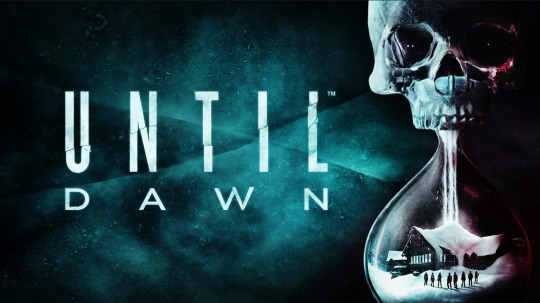
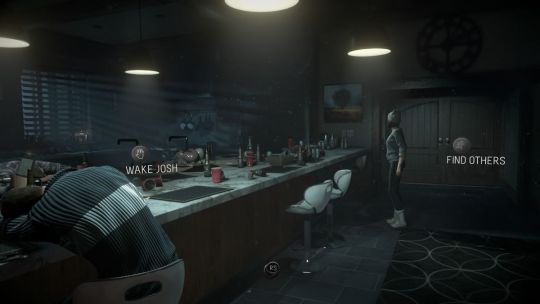
Until Dawn (PS4)
Developed/Published by: Supermassive Games
Released: 25/08/2015
Completed: 04/10/2023
Completion: Everyone survived.
Trophies / Achievements: 80%
It’s spooky season, so I thought I’d play some scary games and for whatever reason Until Dawn happened to be the one that bubbled to the top first.
I think when I was a kid who loved graphic adventures, I think this is what I thought video games would be. Cinematic experiences where you’re constantly making choices that have a meaningful (or not) effect on how the story goes forward. With Until Dawn, the tropes of horror are a perfect setting to ensure this kind of design doesn’t get out of hand: you can limit things almost to: who lives? Who dies?
Of course, there are still, simply, limitations to the form that I don’t think I was thinking about when I was 8 or whatever. Even if you stick close to the traditions of horror and make your cast an interchangeable group of arseholes who the player will be happy to see get offed, there’s only so much branching you can do, and then you also have to put in some stuff the player actually… plays. Which usually means… quick time events.
Isn’t it weird how they’re a thing? They’ve essentially existed since Dragon’s Lair in 1983, where you had to make a (barely) educated guess about which direction to push or which button to hit, and the main (only?) innovation in the last 40 years is that you know get told exactly what to do. And that happened literally about a year after Dragon’s Lair!
Does anyone like them? For me, they’re just an annoying bit where I have to remember which button is where on the controller. In an action game where succeeding at them matters, they are legitimately the worst way to engage me with the action–I’m not watching the cut-scene, I’m waiting for a horrible pop-up–and in a game like this, I think… why not just replace them with more choices? Choose if character A manages to perform the task or not because you want to see the story go one way or the other.
(And while you’re at it, only offer me the choices that are interesting. There’s a hilarious amount of climbing involving QTEs here to stretch things out.)
When I think about QTEs, I think it's telling that this was originally more focused on motion controls; I can imagine QTEs being more successful by actually going back to being more like Dragon’s Lair when played with (say) modern VR controllers. A character leaps to grab something, you throw your hand up and grab. Like Dragon’s Lair, though, that becomes complicated when there’s more than one option (do I do the motion to unsheath his sword, or run away? etc.) and here you just get stuck with Heavy Rain-style “Push R2 to open this door” and then you watch your hero awkwardly move their hand towards the door until you slip off R2 and they stop, creating the world’s most unconvincing human behavior.
Anyway, outside of QTEs, the play here largely features you… walking about slowly, usually following another character, and optionally picking up lore items (if you find them). Also something that feels like it could be almost entirely excised!
The thing about Until Dawn is, though, that the junky plot of “teens go to a cabin in the woods where a tragedy had previously occurred” is easily understandable and, dare I say it, enjoyable. The archetypes and tropes are all on show, and it’s actually fun to try and maneuver through the plot which is never really that surprising, but you don’t really need it to be. In fact, if if wasn’t for all the bits where you actually have to play it rather than making choices it’d be such a breezy wee experience; unfortunately, rather than going for a nice movie length it’s somewhat over-extended into ten episodic chapters, and I was disappointed when I finished it to have absolutely no hunger to play it again to see different things happen.
I suppose also, probably, because seams of the branching become a little too apparent towards the end. There’s a couple of characters who seem destined to die simply because the plot doesn’t do anything with them, and in the final sequences there’s only one character that really matters.
This is still pretty fun for a single run through though, and I imagine it’s much more so if you play it with a group and just see what happens. There’s a lot of jump scares, comedy gore and even a few moments of actual tension.
Will I ever play it again? I won’t, but I’m already considering running through The Quarry, which isn’t supposed to be as good, but there’s something enjoyable sometimes about playing games which are so “low effort” (well apart from the bloody QTEs.)
Final Thought: I wrote about Supermassive Games’ Hidden Agenda six years ago and gave it an absolute kicking–a game which I did play with a group. Should have played Until Dawn back then instead…
Support Every Game I’ve Finished on ko-fi! You can pick up a digital copy of exp. 2600, a zine featuring all-exclusive writing at my shop, or join as a supporter at just $1 a month and get articles like this a week early.
2 notes
·
View notes
Text
Onyx the Fortuitous and the Talisman of Souls (2023) Review

Verdict: 7/10
“Fledgling occultist Onyx and a group of worshipers attend a once-in-a-lifetime ritual at their idol BARTOK THE GREAT'S mansion.”- IMDb
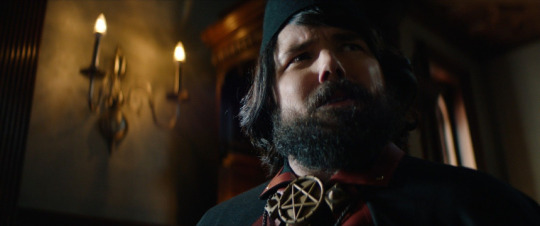
When I saw Bloody Disgusting promoting this movie and it’s one day theater showing I was interested in how it’d turn out, so I made plans.
Was the movie worth seeing? Did it manage to stretch an extremely one note act into a feature length film?
Sort of.
I think the biggest weakness of this movie is it’s incredibly drawn out first act. A first act should set up a movie without drawing the movie to a glacial pace.
Many of the characters are one-note and overacted which makes it hard for audiences to care about where this story could be going.
This includes Onyx, and your enjoyment of this movie will depend entirely upon how much of his terrified and awkward mannerisms you can handle.
If I were to judge this movie by the first half alone, it would’ve been near the bottom of my list.
However, midway it picks up and the film finally catches its comedic stride which is heightened by the excellent use of practical effects, callbacks, and what feels like an actual rising action.
The practical effects are the best part of the movie though. The creature designs just scream 80’s nostalgia, and seeing them in motion is a delight.
By the time I walked out of the theater, I was conflicted on what to give this. I think the end really justifies the means here.
I wouldn’t recommend this movie to anyone who isn’t familiar with Onyx’s skit, but to anyone willing to give it a shot I encourage you to make that leap.
It was a one night only theater experience, but it will likely make its way to ScreamBox sooner or later.
#onyx#onyx the fortuitous and the talisman of souls#youtube#youtube poop#horror films#horror#reanimator#movie review#comedy#jeffrey combs#halloween
3 notes
·
View notes
Photo
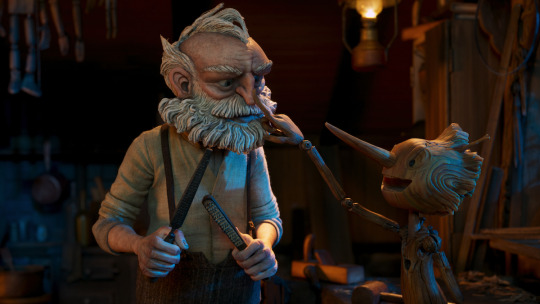
Heck yeah, I’m on board to watch Guillermo del Toro’s take on Pinocchio!
Del Toro’s Pinocchio decides, for Reasons, to set the story in the days of fascist Italy. The basic story is the same, though there are some adjustments to deal with the setting update. But most of all, this story wants to ask a question of whether Pinocchio needs to change at all. The traditional ending of this story is that Pinocchio is changed into a real boy, a human person, and this movie (spoiler alert, but it’s a del Toro movie so it shouldn’t be a surprise) suggests that turning physically human isn’t what the main character needs, nor is it that he should learn to be an obedient boy. Yes, he needs to learn and grow over the course of the story, but what matters isn’t that he’s human, what matters is that he is the best he can be, regardless of the form he is in.
It’s also worth noting that the Wood Sprite, who brings him to life, never suggests the possibility of turning Pinocchio into flesh and blood.
[Guillermo del Toro is not the only director of the movie, by the way.]
Stop-motion animation is an incredibly underrated form of animation, and it’s a shame that you rarely see it used these days. I understand _why_, of course–it takes a LOT of time and effort to do what you could be doing in other ways. But the end result is so rewarding to see on screen, because you have something that is not real, but also looks and seems physically real, because it’s using actual objects. This movie uses its animation beautifully to tell its story, mixing realistic-looking sets and more human-looking characters with the fantastical through figures like Pinocchio, Sebastian J. Cricket, and the Wood Sprite.
The movie makes the very interesting choice of setting itself in fascist Italy. This isn’t entirely new to del Toro–he planned to set his Beauty and the Beast movie in Napoleonic France before that got canceled. But this is something a bit heavier than that. Here is a society that demands obedience without question, and here is a boy whose very nature is not to obey authority without understanding. Pinocchio is disobedient to everyone when he’s first brought to life, though it’s often because he really doesn’t understand any better why he should be. Once he forges bonds of love he’s better with people and slightly better with obedience (but only slightly), but he still doesn’t go with fascist nonsense because that’s what it is! No one bothers to explain it to him, either, just that you HAVE to obey this regime, when Mussolini (yes, he does appear in the movie!) is a slow, short, stupid man who has no real reason to claim the authority and adoration that he does. Then you have the Podesta, who only sees Pinocchio for the potential he has to the army as a soldier who cannot be permanently killed. He doesn’t care to know how that power even works, he just sees it in action and decides to throw him into battle training.
Fascism is just dumb, guys. I hope we can all agree on that? Anyhow.
[As a side note, I think it’s really cool how the movie is set in an actual part of history. Fresh off of reading the Winternight Trilogy, I appreciate seeing fairy tale type stories put in the context of real-world history, and how the two interact. That’s not a criticism against fairy tales that don’t do this, I just think it’s a cool twist on the genre.]
And spoiler alert! Fully in line with other Guillermo del Toro stories, Pinocchio asks whether the idea of our title character becoming human is really the happy ending for the story. In a world in which the monstrous or non-human is increasingly used as a code or metaphor for the marginalized in society, the idea of saying, “Turning them ‘normal’ is the happy ending!” becomes more than questionable. What does it mean to be human? The answer for the film seems not to be about flesh and blood as much as love.
Sebastian J. Cricket is a delightful character, and fun to watch; however, while he serves as narrator I often feel like he really has so little effect on the Plot that at times I wondered why he was there. It isn’t until the end that he starts having actual things to do in the story. Yes, he’s supposed to help Pinocchio figure things out, but Pinocchio never listens to him so it’s hardly meaningful. What’s weird is that the behind-the-scenes feature on Netflix has del Toro declare that he made the Cricket the main character, which he’s really not? It felt like an odd declaration to make.
I also find myself asking: who is this movie for? I would not really call this a children’s movie. Not because I think it’s too scary–there are scary images, but I think that children are more resilient to this sort of thing than adults often give them credit for. But this movie deals with pretty heavy things–it’s not like the fascism is only window-dressing, it’s pretty explicitly part of the story and how the villains operate. I don’t think children will understand it, and I don’t know how many parents want to have that conversation with their kids. I also think that with the conventional wisdom being that entertainment for adults needs more violence and sex, that this film doesn’t fit that bill. I think adults would enjoy it just fine, but I don’t know if it’s marketed towards them.
In the end though, I think it’s a very fine movie. I’ll admit that I don’t know the animated Disney movie that well (I haven’t seen it in decades, but I remember I didn’t like it that much), but I certainly think this one stands on its own as a worthy adaptation. It certainly changes a lot, to make it kind of its own story, but it’s such a good and memorable film, brimming with creativity and so you’re better off giving it a chance just to see its approach.
If you watched the movie and liked it, I fully recommend the behind-the-scenes feature that’s on Netflix. You’ll get some fun little notes about the making of the movie, how the people in production felt about the process, and some word from the cast about their roles.
10 notes
·
View notes
Text
I Figured It Out
So I saw a series of posts on TikTok this morning from @connect_dots7 regarding the connections between the Original Labyrinth and Stranger Things. It was fascinating. Their main thesis connected the Upside Down’s creation/Frozen Time to Mike. That maybe, potentially, Will was NOT the one who froze the Upside Down on November 6, 1983. Instead, they posited that MIKE was the one who subconsciously stopped time. Stay with me here. In Labyrinth, Sarah wishes for her baby brother, Toby, to be taken away by Goblins. She turns off the light in her brother’s room and he is then abducted by goblins. In order to get them back, she must reject her childhood and own up to the fact that she is indeed growing older. It’s sad and melancholy, but it fits her character. The theorist, however, suggested that Mike must do the opposite. We all know Mike wants nothing more than to play DND and Nintendo with Will for the rest of his life, but he does not see a reality in which this is possible. He must grow up, like Sarah, reject these childish dreams, and move on.
But, unlike Sarah, Mike’s resolution is to EMBRACE this part of himself. His nerdiness, his Queerness, and his love for Will, his childhood best friend. He CAN grow up and embrace his childhood at the same time, he only has to allow himself to do it. Mike froze time in the Upside Down as soon as Will pulled out of his garage by flicking off the lights. He didn’t know it, but HE set this entire plan in motion. He wants to be with Will so badly that he was willing to freeze time to make it happen. Now, he must turn the lights back on, this reigniting the flame of their relationship (Hide in the Light).
Notice how EVERY season begins with Mike running late for something? He wants more TIME. More time to be a child, more time to hold on to the things he holds dear, and more time to figure out who he is. When he accepts himself, his interest, and his love for Will, everything will be undone. Remember, Hopper said Mike was the key (with a literal green key behind him). It’s up to Mike to set things right and give himself permission to move on. One cannot truly heal until they work through their own trauma and Lord knows Mike has not done that yet. The moment he realizes that Will loves him exactly as he is and wants to spend the rest of his life with him will set him free. It’s Forced Conformity, that’s what’s KILLING THE KIDS!!!
The theorist also connected this idea to Mike jumping off the quarry in S1. He jumped not because he was trying to save Dustin (although that was certainly part of it), but because he was CONVINCED that Will had jumped and drowned. He had no idea that El was going to catch him and save him. He was ready to d!e for Will. Mike must confront that action (probably by jumping again 😖) and why he did it. When he realizes that he jumped for Will and not Dustin, he will be confronted with his true feelings. (Think Jesus and the Devil, not that I’m comparing Jesus and Mike) All Mike wants is to love and be loved it return. He just thinks that that world can never exist. There’s more on @connect_dot7 but I’ll allow them to explain because they’re more eloquent than me. 😛 But I’ll add this to the equation.
As I read these theories the song “Slipping Through My Fingers” from Mama Mia (don’t judge me) played in my head. It’s written as a Mother/Daughter story, but really centers on Growing Up, losing time, and wanting to FREEZE THE BEAUTIFUL MOMENTS FORVER. This is Mike’s story arc and what he must accept in order to move on and release the Upside Down. I rewrote the lyrics only slightly and when I tell you they fit PERFECTLY!! I actually made myself cry. I’ll post them below. Thanks for listening to my long-winded InfoDump. I appreciate it. (I also think this could EASILY play into the whole “Mike is in a Coma and Must Confornt His Feelings in order to Be Set Free”)
Slipping Through My Fingers (Rewritten for Mike Wheeler and Will Byers)
Schoolbag in hand, he leaves home in the early evening
Waving goodbye with an absent-minded smile
I watch him go with a surge of that well-known sadness
And I have to sit down for a while
The feeling that I'm losing him forever
And without really entering his world
I'm glad whenever I can share his laughter
That funny little boy
Slipping through my fingers all the time
I try to capture every minute
The feeling in it
Slipping through my fingers all the time
Do I really see what's in his mind?
Each time I think I'm close to knowing
We keep on growing
Slipping through my fingers all the time
Sleep in our eyes, him and me at the breakfast table
Barely awake, I let precious time go by
Then when he's gone, there's that odd melancholy feeling
And a sense of guilt I can't deny
What happened to the wonderful adventures
The places I had planned for us to go?
(Slipping through my fingers all the time)
Well, some of that we did but most we didn't
And why? I just don't know
Slipping through my fingers all the time
I try to capture every minute
The feeling in it
Slipping through my fingers all the time
Do I really see what's in his mind?
Each time I think I'm close to knowing
We keep on growing
Slipping through my fingers all the time
Sometimes I wish that I could freeze the picture
And save it from the funny tricks of time
Slipping through my fingers
Slipping through my fingers all the time
Schoolbag in hand, he leaves home in the early evening
Waving goodbye with an absent-minded smile
#byler headcanon#stranger things#stranger things headcanons#will byers#mike wheeler#mike x will#byler endgame#byler tumblr#byler brainrot#byler is requited#flickergate
17 notes
·
View notes
Text
More Trigun: Stampede.
I do really like this series so far. It is providing an interesting take on the Trigun story. It definitely has its differences from the other incarnations, but it does have its own merits. I really love what Studio Orange has done with the action-sequences. They feel "truer to the manga" than the first anime because the manga had a lot of FRENTIC action that circa '90s anime with a limited budget couldn't quite convey. The modern CGI work really has a LOT OF FUN with the motion and having characters be way over the top with their movements and it's glorious.
However, (as of 4 episodes aired - how long was it set to be?) my heart still belongs to the original anime. Here is why:
I love some good blood and gore, I do, and this series, much like the manga, does that in spades, where the first anime was limited. There's also a lot of drama, the serious drama elements of the story are brought in EARLY in this iteration, even earlier than in the manga... but here's the thing:
I feel like some of the levity of the first series is lost. Even the notorious "darker, bloodier, more serious" manga, yes, even the second / seinen-magazine transfer run, Trigun Maximum, had a lot more humor prior to and in between the serious stuff. In other words, it felt more balanced to me.
Back in the day, during the height of my Trigun fandom, I used to get into big, rip-roaring arguments online with fans who were "manga-only" fans or who "preferred the manga because it was so much deeper and so much darker!" and who acted like they were superior fans to those of us who primarily, or even enjoyed equally, the original anime. I liked the manga, too, and I enjoyed some of the darker elements (particularly the Tesla-storyline, which makes Knives' genocidal rage make more sense than the general bullying in the first anime, I think). But, these "oh so superior!" fans... they sucked. I thought they sucked for how they'd look down on the anime and those of us who enjoyed it.
My constant argument: "Just because something is darker doesn't mean that it's deeper."
The storylines of Trigun? Basically amounted to the same kind of themes and meaning. Nightow just put more blood in Trigun Maximum manga because it was running in a seinen magazine rather than the shounen magazine the property had started out in and he could show more blood and go crazy with it. (He was like me when I write horror fanfiction for Y-7 cartoons). It doesn't mean that the overall themes were any different. Some of us actually absorbed them better with the original anime's treatment.
The original anime had, and has - the advantage of "breather" and of having the bright moments that I think make the dark moments more meaningful. It's well-balanced and, well, fun.
Trigun: Stampede, so far, does have the fun of the action-sequences, but I miss the levity of Milly's strangely-insightful ditziness, the goofy random black cats running around, having the Nebraska father-son duo as less of a drama point and more the guy is as tall as a building and has a train in his head... Gosef, I miss your train-steam-stack. I don't think Brilliant Dynamites Neon is going to show up. I'll be surprised if Frank Marlon makes an appearance (although Roberto De Niro seems to be filling in for his alcoholism). Vash... has yet to put a tie on his head, and while very kind to a kid in the new anime, has yet to be actually wrestled to the ground by a gang of them. He hasn't driven Meryl insane by shouting "Love and Peace!" on repeat yet.
It's more like - "Hey, the genocide begins right away! And so does the depression!"
I'm not badmouthing it. As said, I am enjoying it. I am engrossed in how they are handling the story anew. I'm just saying that, thus far, my heart still belongs to the original because I find the slower unfolding mystery and the humor against the darkness instead of almost-all-darkness personally more enjoyable.
13 notes
·
View notes
Text

I read Hawk Mountain by Conner Habib this week. I feel ambivalent about this book. There were elements I liked, but I can’t say I liked the story as a whole.
Here’s the summary:
Single father Todd is relaxing at the beach with his son, Anthony, when he catches sight of a man approaching from the water’s edge. As the man draws closer, Todd recognizes him as Jack, who bullied Todd relentlessly in their teenage years, but now seems overjoyed to have “run into” his old friend. Jack suggests a meal to catch up. And can he spend the night?
I’ll start off by saying I like the prose:
It’s just for a second, but it’s like slow motion: the space between their unclasped hands, the space between her face and Jack’s, it all lingers. Then she squeezes Todd’s hand again, and time goes back to normal
Though I will say there’s a continued metaphor about memory in part four that feels overwrought.
For those interested in reading this book, as a warning, the final third is pretty morbid and graphic.
One of the main theme of the story is cycles of violence, bullying, and abuse never end. It’s a bleak message, and not one I’m fond of.
Until a pivotal moment, adult Todd is pretty passive when Jack comes back into his life. He only takes out his anger on people who can’t fight back.
Despite his own experiences as a teenager, as a teacher, Todd relishes in humiliating one of his students.
Teenage Todd doesn’t deserve what Jack puts him through, but it’s hard to say he was ever a compassionate person. Todd is a complex character, and I liked exploring the gap between his professed values and his actual actions.
Most of the other characters felt more like set pieces than actual people.
I did feel a lot for Anthony, since he had no idea what was going on and no one to help him through it.
Finally, this book centers around a cliche I’m very tired of as a queer person, and as soon I realized the story was going in that direction, I became less invested.
Overall, I would rate this book somewhere between a two star and a three star.
3 notes
·
View notes
Photo






June has passed and we have... well, some things, anyway! This may be one of the most eclectic months ever and frankly, I love it.
Heart of a Wounded Hero: Soldier’s Symphony by Emma Bray is a modern-day-set romance novel featuring a hero named Eric who has been severely scarred by wartime injuries and has become a recluse, composing music but refusing to interact with the world even as they applaud his compositions. But when he hears a singer named Harper perform on television and becomes fixated on her, all bets are off. (I don’t know if Harper’s name is a callout to Jessica Harper, who played the Christine character Phoenix in Phantom of the Paradise, or just a musical-sounding name, but it’s on theme either way!)
The Observer Effect by Nick Jones is part of a science fiction series about time travelers who visit various periods of history to prevent timeline-destroying disasters, and this time they’re going to nineteenth century Paris, where something very distressing is happening at the opera. It looks like this one might need a little more knowledge of the series to fully get what all the recurring characters are about; it doesn’t seem designed as a standalone.
Razorback Hollow by Rene Moore is a completely different book from Heart of a Wounded Hero, but you could be forgiven for not realizing it from the blurb: it, too, is a modern-day romance version in which scarred wilderness man Eric falls in love with a beautiful young woman and upends his entire life about it. This time, however, everyone is in the mountains of West Virginia and there are various action accidents involved, and a feud!
Scent of Obsession by Shanen Ricci owes more to a straight retelling of the Beauty & the Beast fable than the Phantom story from the blurb, but the brooding Gothic main character is referred to as “the Phantom” at least occasionally, so it’s making it onto the list! Interestingly, the focus of his obsession, Lily, is a budding perfumier who wants to make beautiful scents, so that’s an art form we haven’t seen in a Phantom story yet, I think. (No idea if it’s related to Patrick Suskind’s harrowing novel Perfume, but that’d be a fabulous crossover for the Phantom story, as both are about obsession born from love affairs with the perceptions of specific senses!)
The Showstopper by Kyle Robertson is an interesting one; set in the 1920s, it features a masked Phantom who isn’t confined to a single opera house and instead haunts an entire theater district, disrupting performances at ALL the venues. I don’t think it’s a riff on any of the other early-20th-century Phantom sequels or pieces, like The Phantom of Manhattan or its musical progeny Love Never Dies, but if it is, it’s going a much more action and murder direction.
Symbolum Venatores by Ty’ron W.C. Robinson II is a collection of stories about a time-traveler (or immortal? It’s hard to tell!), Gabriel Kane, who has been present at real-life versions of the stories of historical classics. Which includes our Phantom, who appears in the last story in the collection, “The Phantom of the Opera”, although I have no idea what the premise is beyond that. (No, no apparent connection to Gabriel Knight, the main character from a series of games by Jane Jensen, who also did Gray Matter to get into the Phantom game later.)
And then there’s this mess:

This is... well, something is going on here, but I’m not sure what. See, it looks like there are five books above, but actually there are only two. Nocturne and The Opera’s Specter have the exact same text, down to the formatting, from what I can tell in their previews, and Life in Motion, The Opera’s Front Steps, and The Phantom of the Opera’s Story all have the same text as one another as well. I tried slinging a few lines into search engines and didn’t find anything, but I’m wary that these may be stolen/repackaged fanfiction, especially because all the books above are under different authors’ names - from left to right, Gregg Amster, Abdul Scaiano, Dale Kralicek, Keira Gramberg, and Billy Paddack. (Frankly, the authors’ names sound a bit like what you’d get thrown up by a procedurally generating AI trying to come up with original names, but I don’t want to say that for sure. Sometimes real-life people just have weird names.) Even weirder, the Kindle and physical editions of the exact same book are listed under different names - Nocturne shows up as by an “Oswaldo Ballow” in its hard copy form, for example, and The Opera’s Specter as being by a “Leticia Nibler”, while the hard copy of The Phantom of the Opera’s Story is listed as being by “Lucas McGougan.”
It’s possible it’s just a case of a seller changing their mind about what they want to call their book AND about their pen name at the same time, and not taking the old editions off of Amazon after putting in the new ones. The next best possible scenario is it’s a legitimate book, but its author is trying to scam (or more charitably just isn’t very good at this and is making an ill-advised effort at marketing) readers into buying multiple different copies of the same work. But it’s unbearably fishy. (So are the prices - who is out here charging this much for self-published Kindle books, and what kind of weird rounding resulted in asking for $8.69? It’s also notable that all of them ask for this weird price, for the most part, which makes it seem less than coincidental.)
As an aside, this is the point where I’m going to have to officially give up on being the fandom whistleblower for stolen art on Amazon, simply because I can’t keep up anymore. This month I counted eight new “coloring books” entirely made of stolen art from multiple artists, and most of them were under different scam accounts. If you’re a fandom artist, I suggest searching “<fandom name> coloring book” and “<fandom name> trivia” on Amazon semi-regularly so you can report anything that features your work. (Actually, you might want to look into editions of Leroux’s work, too, because it may be in public domain but the sellers who keep stealing art to put on the covers appear to mistakenly think that applies to all related artwork, too.)
#phantom of the opera#the phantom library#new phantom releases#emma bray#rene moore#nick jones#kyle robertson#shanen ricci#ty'ron wc robinson ii
16 notes
·
View notes